Table of Contents
5 Toxic Home Products We Use Every Day (And Safer Alternatives)
This page may contain affiliate links. We may earn a commission on purchases, at no additional cost to you. Learn more →
Ever think about how many products you reach for everyday, from cleaning products to cosmetics that may be doing more harm than good? The truth is, toxic home products are more common than we realize quietly impacting human health.
Toxins may lurk in everyday household products like cosmetics, cleaners, and even mattresses, affecting your health more than you think.
Here's the good news: making a few simple swaps to your household products can go a long way in reducing your exposure to these harmful toxins. I myself have been making small swaps to non-toxic products over the years, and have never looked back!
Learn how to identify 5 toxic everyday products you and I both likely usea nd swap them for safer, effective alternatives that are better for you, your home, and the planet.
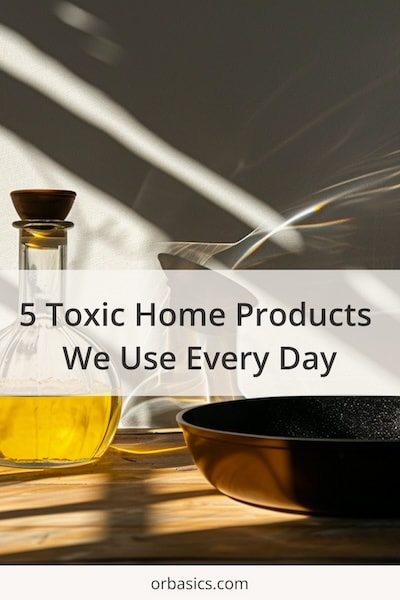
1. Conventional Cleaning Products & Laundry Detergents
We all love a fresh home, but most cleaning products and detergents are loaded with unnecessary toxins. These household chemicals get absorbed into our skin, contaminate our water systems, pollute our oceans and harm marine life.
Toxic ingredients in Cleaning Products & Laundry Detergents
-
Volatile organic compounds (VOCs), are extremely common in conventional cleaning products and laundry detergents- one study reported 193 hazardous VOCs in 30 cleaning products. Linked to respiratory issues and cancer risk, VOCs are highly hazardous and negatively impact indoor and outdoor air quality.
-
Triclosan is a pesticide and antimicrobial agent found in cleaning products, although restricted in soap, it is a known endocrine disruptor, irritating the skin and eyes
-
Chlorine bleach is frequently used in cleaning and laundry products and as obvious as the odor it gives off, chlorine bleach is hazardous and highly toxic and as stated on the bottle it "can cause severe burns to skin and eyes, blindness, and respiratory failure"
-
Other toxic substances found in these household cleaners are include phthalates, parabens, and more
Safer Cleaning Products:
-
Castile Soap* - this versatile vegetable soap is eco-friendly and gentle on your skin. It can be used for everything from dishwashing to all-purpose cleaning! There are also many non-toxic dish soaps to choose from!
-
DIY all purpose cleaner - by mixing equal parts white vinegar and water, you have yourself a simple and effective cleaner.
-
DIY laundry detergent - by combining soda crystals, bicarbonate of soda, castile soap, and boiling water you have an easy laundry solution! Soapnuts* are another natural detergent option
-
Eco-friendly cleaners and detergents - Natural brands like Seventh Generation* or Truly Free* are fragrance free and void of harmful chemicals, and are available from many supermarkets - still keeping it convenient!
-
Natural laundry solutions: Options such as soda crystals, bicarbonate of soda, and soapnuts* provide safe and effective laundry cleaning without harmful chemicals. Essential Oils in the Dryer: Instead of fabric softeners, use essential oils like lavender* on wool dryer balls *for natural scent and softening

2. Cosmetics & Personal Care Products
When it comes to personal care, we are often quick to grab our favourite shampoo or moisturiser from the shelf without a second thought. However, hidden in these products are a host of chemicals, luckily there is a wealth of information to help you read ingredient lists, beauty certificates and decoder apps to inform you how harmful products are too!
The Environmental Working Group (EWG) reported that American women use an average of 12 personal care products daily which contain approximately 168 different chemicals. US Researchers stated that 1 in 8 of the 82,000 ingredientsused in these toxic products are also industrial chemicals!
Toxic ingredients in Cosmetics & Personal Care Products
-
PFAS (per- and porfluoroalkyl substances) or 'forever chemicals' are common in cosmetic products, to improve water-resistance and product texture. However, these chemicals can accumulate in the body causing immune system damage and an increased cancer risk
-
Parabens (methyl-, propyl- and butylparaben) are preservatives used to extend the shelf-life of products and are found in many shampoos and cosmetics products. They are however, known endocrine disrupters and maybe potentially linked to breast cancer
-
Phthalates (diethyl phthalate), used to help products like perfumes, nail polishes, hairsprays etc cling to the skin and be long-lasting. Phthalates have been reported to impact hormone and reproductive health and increase cancer risk
-
Formaldehyde is a VOC found in many personal care products from eyelash glue to liquid baby soaps! Used extend a products shelf-life and prevent bacterial growth, this known carcinogen can also cause allergic skin reactions too
-
Oxybenzone: Common in suncream and moisturisers with SPF, this UV filtering chemical is a suspected carcinogen and endocrine disrupters
Safer Alternatives:
The good news, is that you do not have to compromise on beauty or self-care, your favourite toxic-free alternative is waiting for you!
-
Natural or Organic Skin Care - Look for body wash, and shampoo products that contain natural ingredients like shea butter, coconut and jojoba oils that can be implemented into your skincare routine
-
Non-toxic makeup products - Brands like ILIA beauty, RMS beauty, Kosas, 100% Pure offer non-toxic alternatives for your makeup routine
-
Natural deodorants- Explore more environmentally friendly and non-toxic deodorants like Fussy, Wild and AKT London
-
Mineral sunscreens - Opt for suncreams with titanium dioxide and zinc oxide, which although are thicker in texture are safer alternatives to chemical suncreams
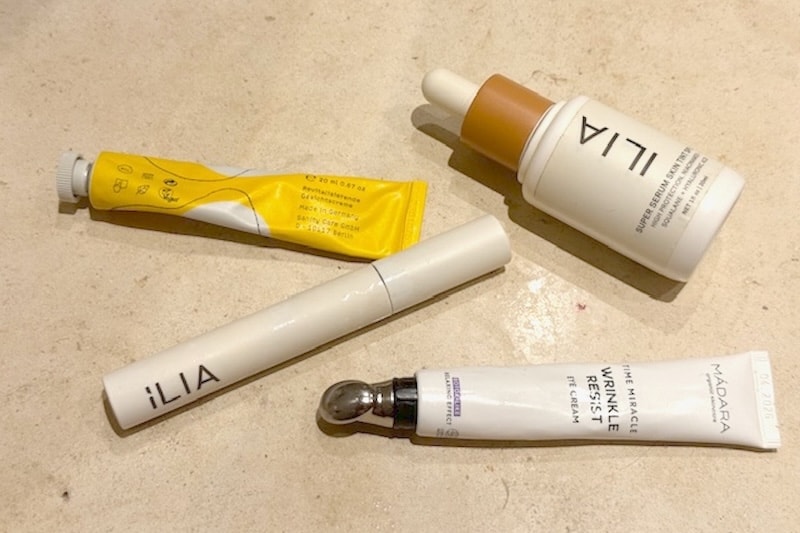
3. Fragrance: Air fresheners, Candles & Co
A pleasant-smelling home is inviting, whether it's from an autumnal candle, or a clean burst of citrus from an air freshener but these seemingly harmless products composed of synthetic fragrance fill our air with hazardous chemicals that affect human health. Did you know that indoor pollution is the 8th most important risk factor, and accountable for 2.7% of the burden of disease globally, every year?
Harmful Chemicals found in Fragrance
Fragrance is found in most household products. Unfortunately, the term 'fragrance' or 'parfum' is not strictly regulated, allowing companies to avoid disclosing a full list of ingredients used in their formulations. Synthetic fragrance contain is a big concern for most people causing allergic reactions including contact dermatitis and asthma.
-
Synthetic Fragrances: Lack of regulation allows the inclusion of toxic substances like benzene, toluene and formaldehyde , which can cause headaches, respiratory distress, and allergic reactions.
-
VOCs from Paraffin Wax: When burned, candles made from paraffin release harmful VOCs that degrade indoor air quality.
-
Phthlates are common in candles and air fresheners, serving to enhance and prolong the scent. However, these chemicals are associated with health risks including endocrine disruption and reproductive health issues.
Safer Alternatives:
-
Soy or beeswax candles are made from natural ingredients and burn cleaner. I used to rely on conventional candles, thinking they were harmless until I noticed how much they affected my allergies. Brands like Living Good Candle Co.*, Bluecorn *, Happy Organics* offer non-toxic candles, which create a cozy ambience, without the toxic fumes.
-
Opt for safer alternatives like baking soda and vinegar, which naturally neutralize odors without harmful side effects.
-
Essential Oil Diffusers, a great alternative to air fresheners, not only are they plant-derived but they offer potential therapeutic effects in a variety of scents without synthetic fragrance
-
Homemade potpourri can keep your home smelling and looking lovely, by combining dried flowers, herbs, spices, and dehydrated fruit, you can generate your own natural signature home scent
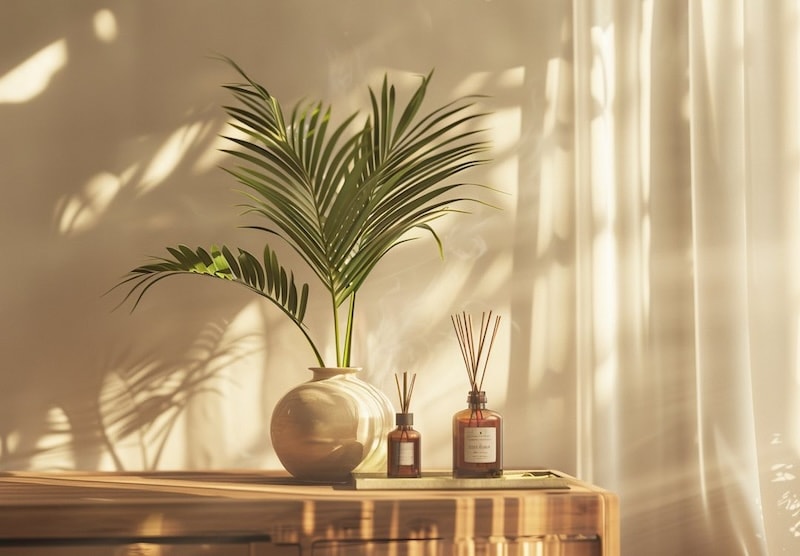
4. Non-Stick Cookware
Non-stick cookware is a stable in many kitchens, since being introduced 60 years ago they make-up 70% of cookware purchased today. However, the desirable non-stick effect of these pans comes with hidden affects on human health.
Toxic ingredients found in Non-Stick Cookware
-
Teflon, is most common non-stick coating is made from a chemical called polytetrafluoroethylene (PTFE), and when heated, these chemicals break down releasing fumes like perfluorooctanoic acid (PFOA).
When teflon is heated above 260°C, the toxic fumes released can cause flu-like symptoms in humans (Teflon flu), these fumes are also fatal to pets
-
PFOA has been linked to hormone disruption, thyroid conditions, and even some cancers. Whilst this chemical is being faded out of newer cookware, watch out it could still be present in your older pans
Safer Alternatives:
-
Cast Iron: Durable and naturally non-stick when properly seasoned, cast iron cookware is a healthy and long-lasting alternative.
-
Ceramic Cookware: Free from harmful chemicals, ceramic pans provide a safe cooking surface with effective non-stick properties.
-
Stainless Steel: While not inherently non-stick, stainless steel cookware is free from toxic coatings and highly durable, making it a safe choice for various cooking needs.
However, please note that often these pans require seasoning before use to activate the non-stick feature in these pans.

5. Plastic Water Bottles and Food Storage (Tupperware Containers & Plastic Wrap)
We often reach for cheap plastic containers and single-use water bottles without thinking about the consequences. However, these plastics come with their fair share of health and environmental issues. Global plastic production has reached 500 million metrics tons a year, 40% of this plastic is used for packaging, which includes food containers and water bottles.
Toxic ingredients in everyday plastic
Plastics are made with an assortment of chemicals, a recent study reported that there are over 16,000 chemicals, with at least 4,200 of them contributing to serious health and environmental concerns. Some of the most common culprits are:
-
BPA (bisphenol A) is one of the most commonly chemicals in plastic products, especially in single-use plastic food containers and water bottles. BPA can leach into food and drink, posing reproductive and fertility risks and as a oestrogen mimic, it can cause hormonal imbalances and can increase cancer risk
-
Phthalates make plastics more flexible, and are commonly found in plastic food wrap and soft plastic food containers. Like BPA, they are linked to reproductive problems and certain cancers
-
Antimony is a toxic heavy metal found in PET (polyethylene terephthalate) plastic, it can leach in disposable water bottles, especially when heated. Many studies have linked antimony to organ toxicity and increased risk of cancer
As we all know plastic poses a significant environmental concern, with every year 8 million metric tons of plastic waste enters the oceans. Plastic takes 450 years to decompose, and when exposed to sunlight, microplastics are formed, which release methane and ethylene, two of the most powerful greenhouse gases which contribute to climate change
Safer Alternatives:
-
Reusable non toxic water bottles - one of the easier swaps is ditching the single-used plastics water bottles and opting for a stainless steel or glass water bottle, they are durable, and keep your water tasting fresh
-
Glass & Stainless steel food containers - when it comes to leftovers, swap out your old tupperware for a glass or stainless steel food container, both are long-lasting, and don't absorb stains or odors like plastic does
-
Beeswax Wrap - are a great eco-friendly alternative to plastic wrap. I was at first skeptical at first, but after using them for a while, I am now a convert, they also add a bit of charm to your kitchen
-
Reverse osmose filters - According to Dr. Andrew Huberman, ‘ Tap water sources worldwide contain compounds that can impact our health, particularly endocrine disruptors.’ By using a reverse osmosis filter, you can remove 99% of the waters contaminates, it is a game changer for people concerned about tap water quality, reverse osmose filters can drastically reduce these risks.
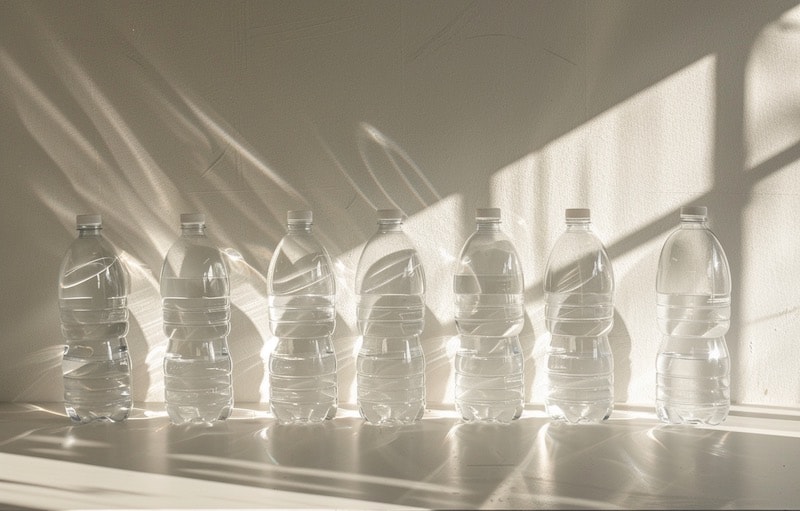
Reducing Exposure to Toxic Chemicals
The good news is that by taking some simple precautions, you can significantly reduce your exposure to these harmful chemicals. Here are a few actionable tips:
-
Read Labels Carefully: Before buying cleaning supplies, cosmetics, and other household products, always check the labels. Look for products that are free from VOCs, synthetic fragrances, irritants, and flammable ingredients. Prioritize items with clear, transparent labeling that includes certifications from reputable sources like MADE SAFE or EWG verified
-
Use Reliable Resources: When choosing products, consult trustworthy sources like the U.S. Environmental Protection Agency’s (EPA) Safer Choice list. These organizations rigorously test products for safety, ensuring they contain minimal harmful substances.
By taking these steps, you can start creating a healthier environment for yourself and your family.
Key Takeaways:
-
Reduce Everyday exposure - many common household products from cleaning supplies to cosmetics contain harmful chemicals that negatively impact health. Embracing non-toxic living means making simple changes to reduce your exposure to these chemicals towards a healthier home
-
Embrace Eco-friendly cleaners - Starting small you can swap conventional cleaners for safer alternatives like DIY cleaners, natural labels and castille soap
-
Go natural in personal care - Organic skincare and non-toxic makeup is best for avoiding endocrine disruptors and other harmful ingredients
-
Say No to plastic by opting for glass and stainless steel containers you can avoid toxic chemicals leeching into your food and drinks
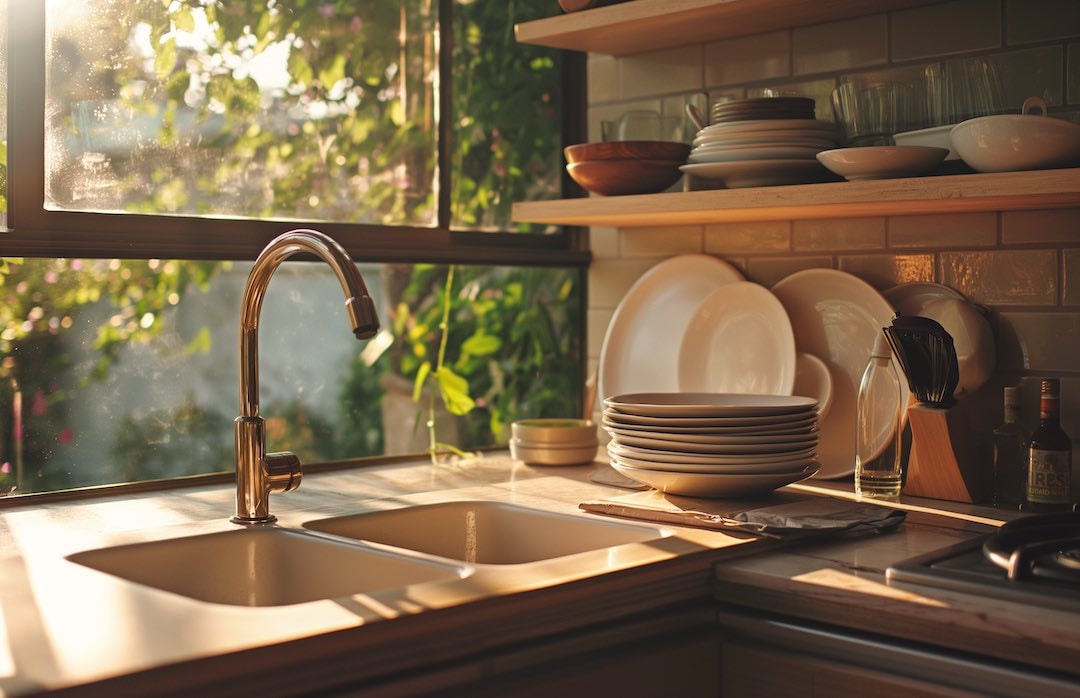
If you enjoyed this post, check out these other articles on safe and non toxic products:
-
Unmasking Toxins: Ingredients To Stay Away From In Makeup and Skincare Products
- Best Non Toxic & Natural Shampoo Bars for Healthy, Beautiful Hair
FAQ to Toxic Home Products
What is a toxic household item?
A toxic household item is any product commonly found in homes that contains harmful chemicals capable of causing adverse health effects or environmental damage. These items often release hazardous substances such as volatile organic compounds (VOCs), endocrine disruptors, or heavy metals during their use or disposal. Toxic household items can range from cleaning supplies and personal care products to cookware and plastic containers.
What are examples of toxic products?
Examples of toxic products include household cleaning agents such as bleach, ammonia, and drain cleaners. Personal care items like certain soaps, shampoos, and cosmetics may contain triclosan, a potentially hazardous antimicrobial agent
What are some common products available now that are toxic?
Common toxic products available today include many mainstream cleaning products and detergents loaded with VOCs and other harmful chemicals. Personal care items like conventional shampoos, conditioners, and cosmetics often contain endocrine disruptors and carcinogens such as parabens and formaldehyde. Non-stick cookware is widely used despite the presence of PTFE and PFOA, which pose significant health risks. Additionally, everyday plastics like single-use water bottles, plastic wraps, and certain Tupperware containers frequently contain BPA and phthalates. Even widely used air fresheners and candles can emit toxic substances like benzene and toluene, contributing to indoor air pollution













